พาไปวัด
วัดพระพุทธบาทสี่รอย (Wat Phra Phutthabat Si Roi)
วัดที่เป็น Unseen ใน จ.เชียงใหม่ ที่มีความสวยงาม และมีสิ่งอัศจรรย์ คือรอยพระพุทธบาททั้งสี่รอยที่ประดิษฐานบนแท่นหินท่ามกลางป่าเขาบนดอยสูง เป็นวัดที่ห้ามพลาดจริงๆเมื่อมาอ.แม่ริม จ.เชียงใหม่ แห่งนี้
วัดนั้นคือ วัดพระพุทธบาทสี่รอย
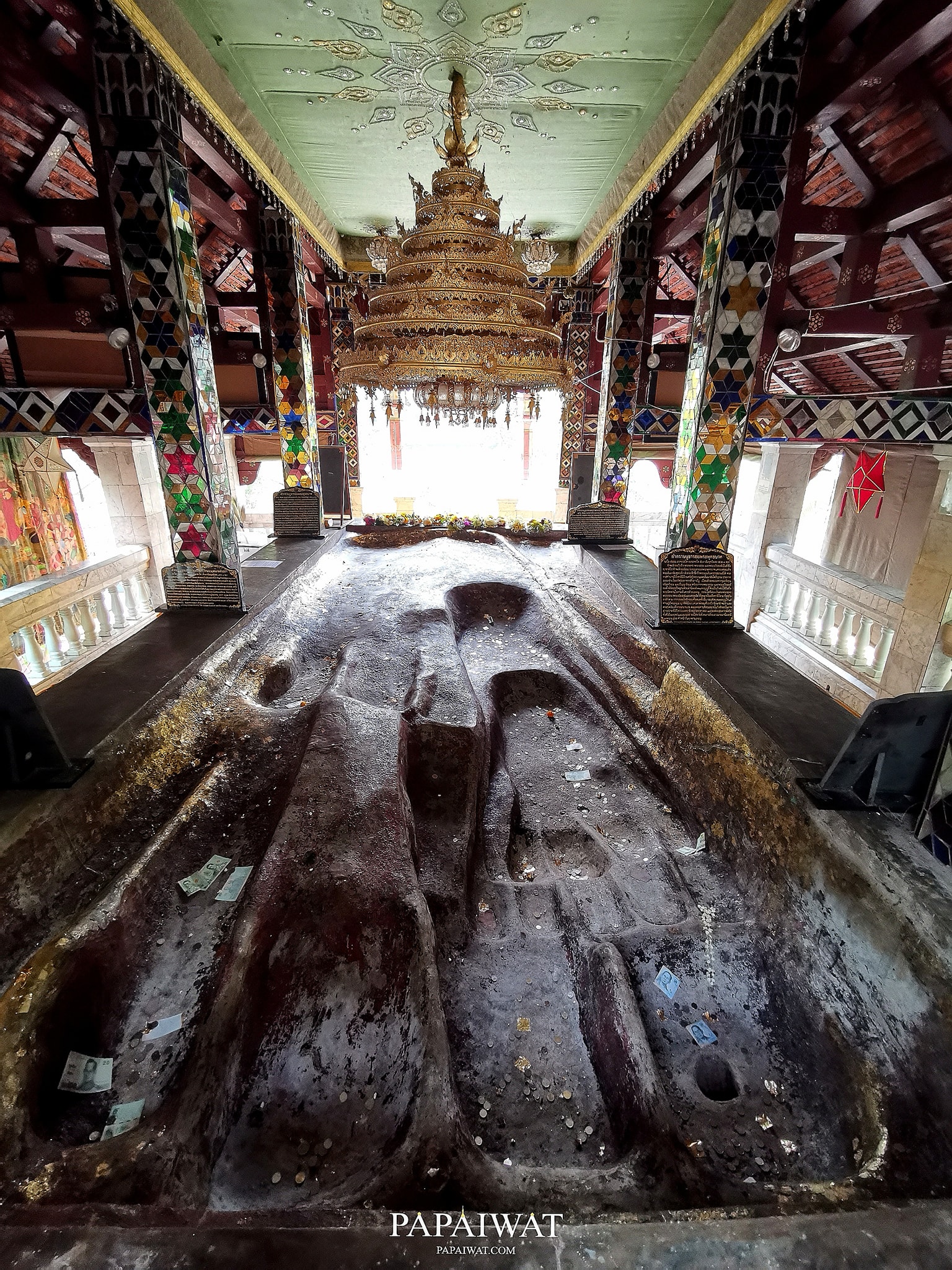
วัดพระพุทธบาที่รอยนั้นมีรอยพระพุทธบาทประทับซ้อนกันถึงสี่รอยคือพระพุทธบาทของพระพุทธเจ้าทั้งสี่พระองค์ในภัทรกัลป์นี้
1. รอยพระพุทธบาทของพระพุทธเจ้ากกุสันธะ รอยแรกเป็นรอยใหญ่ มีขนาด12 ศอก
2. รอยพระพุทธบาทของพระพุทธเจ้าโกนาคมนะ เป็นรอยที่ 2 ขนาดยาว 9 ศอก
3. รอยพระพุทธบาทของพระพุทธเจ้ากัสสปะเป็นรอยที่ 3 ขนาดยาว 7 ศอก
4. รอยพระพุทธบาทของพระพุทธเจ้าโคตะมะ ( ศาสนาปัจจุบัน ) เป็นรอยที่ 4 รอยเล็กที่สุด มีขนาดยาว 4 ศอก
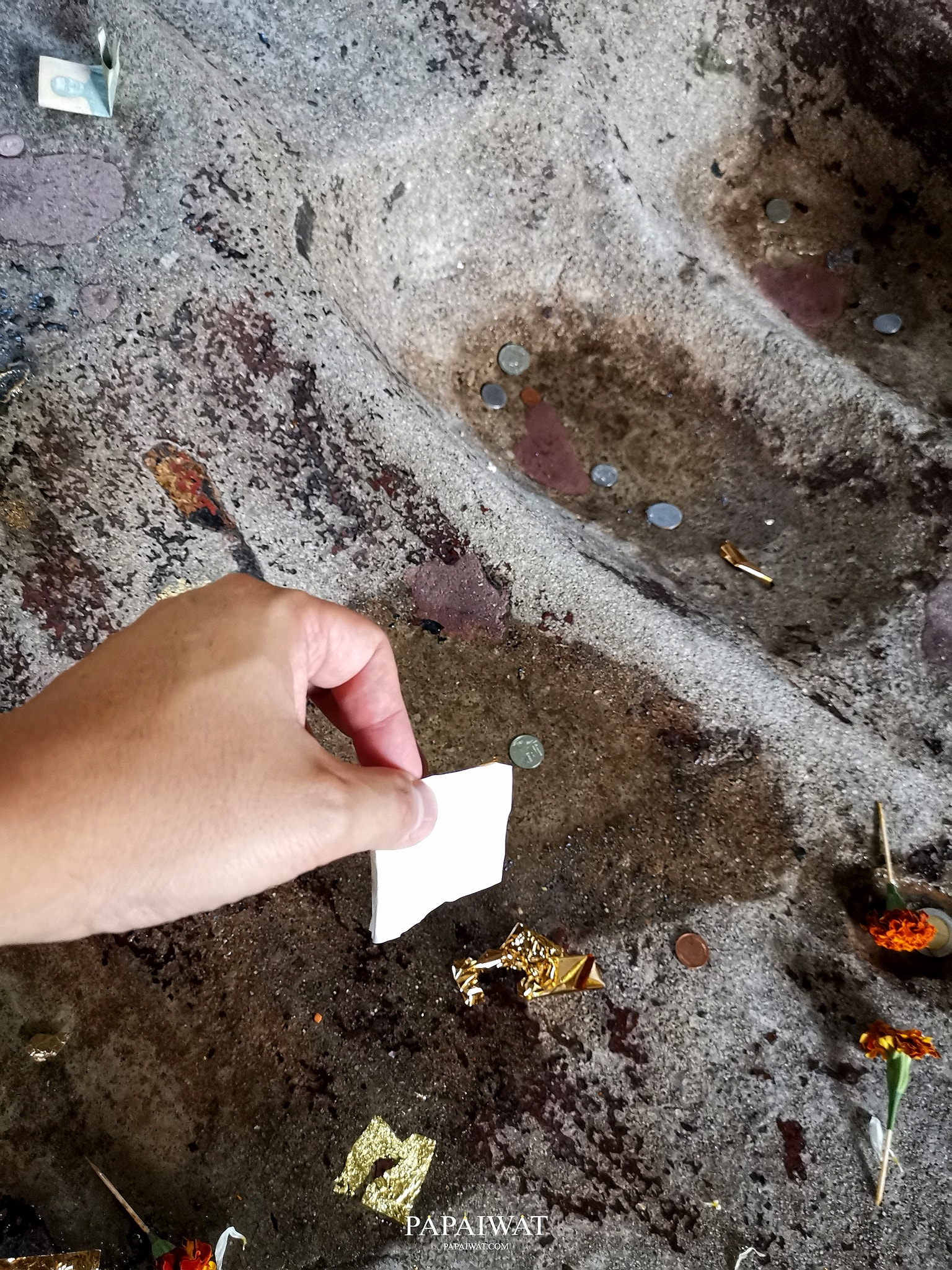
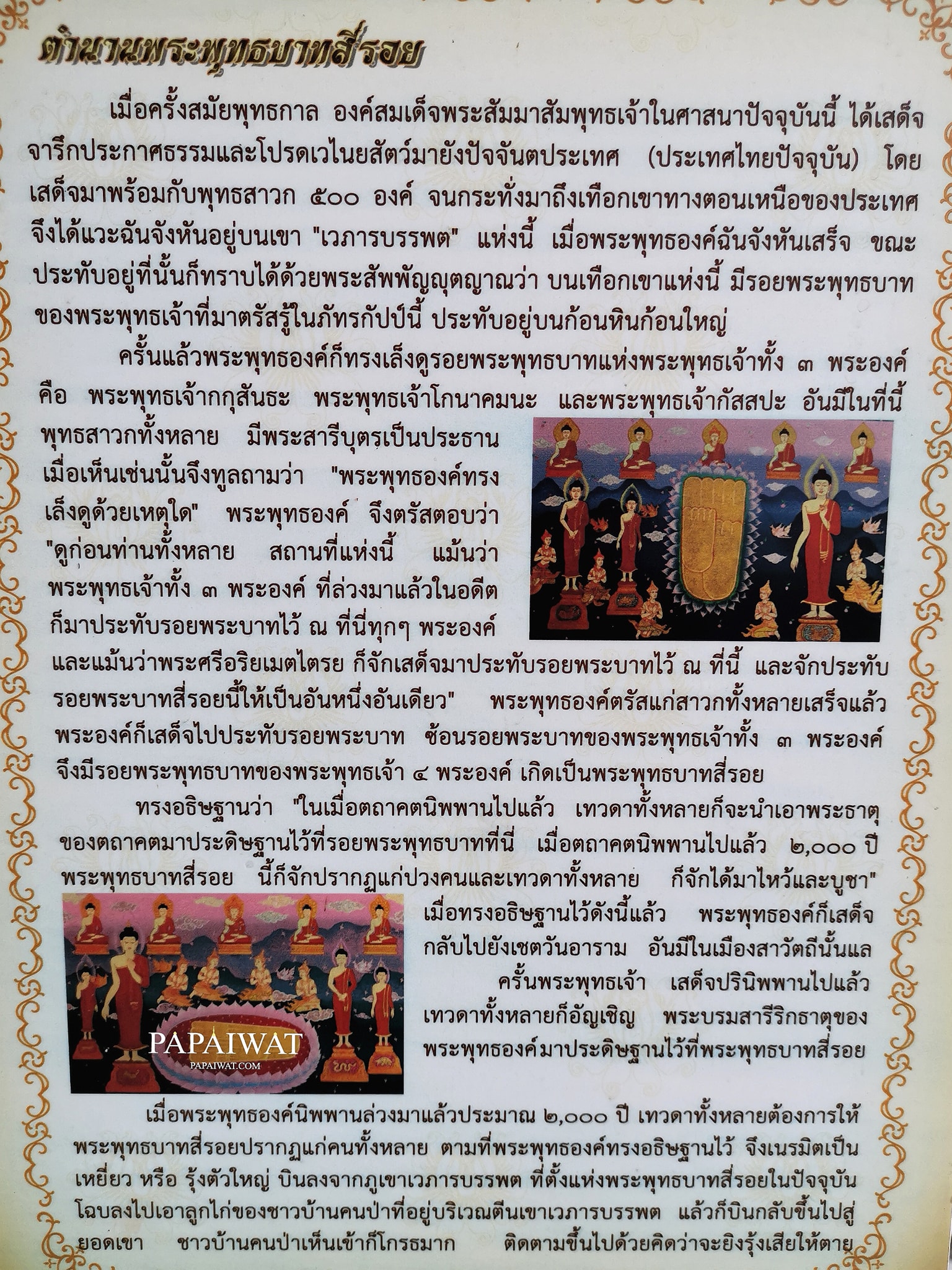
เมื่อครั้งสมัยพุทธกาล องค์สมเด็จพระสัมมาสัมพุทธเจ้าในศาสนาปัจจุบันนี้ ได้เสด็จจาริกประกาศธรรมและโปรดเวไนยสัตว์มายังปัจจันตประเทศ (ประเทศไทยในปัจจุบัน) โดยเสด็จมาพร้อมกับพุทธสาวก 500 องค์ จนกระทั่งมาถึงเทือกเขาทางตอนเหนือของประเทศ จึงได้แวะฉันจังหันอยู่บนเขา “เวภารบรรพต” แห่งนี้ เมื่อพระพุทธองค์ฉันจังหันเสร็จ ขณะประทับอยู่ที่นั่นก็ทราบได้ด้วยพระสัพพัญญุตญาณว่า บนเทือกเขาแห่งนี้ มีรอยพระพุทธบาทของพระพุทธเจ้าที่มาตรัสสรู้ในภัทรกัปป์นี้ ประทับอยู่บนก้อนหินก้อนใหญ่
ครั้นแล้วพระพุทธองคืก็ทรงเล็งดูรอยพระพุทธบาทแห่งพระพุทธเจ้าทั้ง 3 พระองค์ คือ พระพุทธเจ้ากกุสันธะ พระพุทธเจ้าโกนาคมนะ และพระพุทธเจ้ากัสสปะ อันมีในที่นี้ พุทธสาวกทั้งหลาย มีพระสารีบุตรเป็นประะาน เมื่อเห็นเช่นนั้นจึงทูลถามว่า “พระพุทธองค์ทรงเล็งดูด้วยเหตุใด” พระพุทธองค์จึงตรัสตอบว่า “ดูก่อนท่านทั้งหลาย สถานที่แห่งนี้แม้นพระพุทธเจ้าทั้ง 3 พระองค์ ที่ล่วงมาแล้วในอดีตก็มาประทับรอยพระบาทไว้ ณ ที่นี้ ทุกๆพระองค์ และแม้นว่าพระศรีอริยเมตไตรย ก็จักเสด็จมาประทับรอยพระบาทไว้ ณ ที่นี้ และจักประทับรอยพระบาทสี่รอยนี้ให้เป็นอันหนึ่งอันเดียว” พระพุทธองค์ตรัสแก่สาวกทั้งหลายเสร็จแล้ว พระองค์ก็เสด็จไปประทับรอยพระบาท ซ้อนรอยพระบาทของพระพุทธเจ้าทั้ง 3 พระองค์ จึงมีรอยพระพุทธบาทของพระพุทธเจ้า 4 พระองค์ เกิดเป็นพระพุทธบาทสี่รอย
ทรงอธิษฐานว่า “ในเมื่อตถาคตนิพพานไปแล้ว เทวดาทั้งหลายก็จะนำเอาพระธาตุของตถาคตมาประดิษฐานไว้ที่รอยพระพุทธบาทที่นี่ เมื่อตถาคตนิพพานไปแล้ว 2,000 ปี พระพุทธบาทสี่รอยนี้ ก็จักปรากฎแก่ปวงคนและเทวดาทั้งหลาย ก็จักได้มาไหว้และบูชา”
เมื่อทรงอธิษฐานไว้ดังนี้แล้ว พระพุทธองค์ก็เสด็จกลับไปยังเชตวันอาราม อันมีในเมืองสาวัตถีนั้นแล ครั้นพระพุทธเจ้า เสด็จปรินิพพานไปแล้ว เทวดาทั้งหลายก็อัญเชิญพระบรมสารีริกธาตุของพระพุทธเจ้า มาประดิษฐานไว้ที่รอยพระพุทธบาทสี่รอย
เมื่อพระพุทธองค์นิพพานล่วงมาแล้วประมาณ 2,000 ปี เทวดาทั้งหลายต้องการให้พระพุทธบาทสี่รอยปรากฎแก่คนทั้งหลาย ตามที่พระพุทธองค์ทรงอธิษฐานไว้ จึงเนรมิตเป็นเหยี่ยว หรือ รุ้งตัวใหญ่ บินลงจากภูเขาเวภารบรรพต ที่ตั้งแห่งพระพุทธบาทสี่รอยในปัจจุบัน โฉบลงไปเอาลูกไก่ของชาวบ้านคนป่าที่อยู่ในบริเวณตีนเขาเวภารบรรพต แล้วก็บินกลับขึ้นไปสู่ยอดเขา ชาวบ้านคนป่าเห็นเข้าก็โกรธมาก ติดตามขึ้นไปด้วยคิดว่าจะยิงรุ้งให้ตายเสีย ครั้นค้นหาดูก็ไม่พบเห็นรุ้งตัวนั้น กลับพบเห็นรอยพระพุทธบาทสี่รอย อยู่พื้นต้นไม้และเถาวัลย์ ชาวบ้านผู้นั้นก็ทำการสักการะบูชาเสร็จแล้วจึงลงจากภูเขา พอถึงหมู่บ้านก็บอกเล่าแก่ชาวบ้านทั้งหลาย ความอันปรากฎสืบๆกันมา คนทั้งหลายที่ทราบก็พากันไปสักการะบูชาเป็นอันมาก จึงได้ชื่อว่า “พระบาทรังรุ้ง” หรือ “พระพุทธบาทรังเหยี่ยว”
ในสมัยนั้น พระยาเม็งรายเสวยราชสมบัติในเมืองเชียงใหม่ ได้ทราบข่าวนี้ จึงมีพระราชศรัทธาเสด็จขึ้นไปสักการะบูชาพระพุทธบาทสี่รอย พร้อมด้วยพระราชเทวี เสนาและบริวาร เมื่อพระยาเม็งรายกราบนมัสการเสร็จแล้ว ก็นำเอาบริวารของตนกลับสู่เมืองเชียงใหม่ อยู่เสวยราชสมบัติตราบสิ้นอายุขัย พระราชวงศ์ที่สืบราชสมบัติก็เจริญรอยตาม ขึ้นมากราบสักการะพระพุทธบาทสี่รอย ทุกๆพระงอค์ หลังจากนั้นมา พระบาทรังรุ้ง หรือ พระบาทรังเหยี่ยว จึงได้เปลี่ยนชื่อเป็น “พระพุทธบาทสี่รอย” คือ มีรอยพระพุทธบาทของพระพุทธเจ้าทั้งสี่พระองค์ที่ล่วงมาแล้วในภัทรกัปป์นี้ประทับซ้อนกัน
ครั้นถึงสมัยพระยาธรรมช้างเผือก ผู้ครองนครเชียงใหม่ ขึ้นไปกราบสักการะพระพุทธบาทสี่รอยพร้อมด้วยบริวาร 500 คน ได้สร้างพระวิหารครอบรอยพระพุทธบาทบนยอดศิลาก้อนใหญ่นั้น เดิมทีต้องปีนขึ้นไป หรือใช้บันไดพาดจึงสามารถขึ้นไปกราบได้ พระยาธรรมช้างเผือกจึงโปรดให้สร้างแท่นยืนคล้ายนั่งร้านไว้รอบๆ ก้อนศิลา เพื่อให้สตรีได้มีโอกาสเห็นรอยพระพุทธบาทด้วย
เมื่อพระราชชายาเจ้าดารารัศมี ขึ้นไปกราบนมัสการพระพุทธบาทสี่รอย ก็มีพระราชศรัทธาสร้างวิหารไว้บูชารอยพระพุทธบาท 1 หลังเล็ก ปัจจุบันได้บูรณะปฏิสังขรณ์แล้วทั้งหลัง คงไว้แต่ผนังวิหาร พื้นวิหาร และแท่นพระที่เป็นของเดิม
ต่อมา พ.ศ. 2472 ครูบาศรีวิชัย นักบุญแห่งล้านนาไทย ขึ้นไปกราบนมัสการพระพุทธบาทสี่รอย ก็ได้รื้อพระวิหารชั่วคราว ที่พระยาธรรมช้างเผือกสร้างไว้ แล้วสร้างพระวิหารครอบรอยพระพุทธบาทให้ใหม่ โดยฉาบปูนครอบรอยพระพุทธบาทเดิมไว้เพื่อรักษาพระพุทธบาทสี่รอย อันเป็นรอยพระพุทธบาทที่เก่าแก่ที่สุดในประเทศไทยให้อยู่ค้ำชู คู่พระพุทธศาสนาไปตลอดกาลนาน
(เครดิต : อ้างอิงข้อมูล ถอดความตัวอักษรจาก แผ่นพับประชาสัมพันธ์ของวัดพระพุทธบาทสี่รอย)

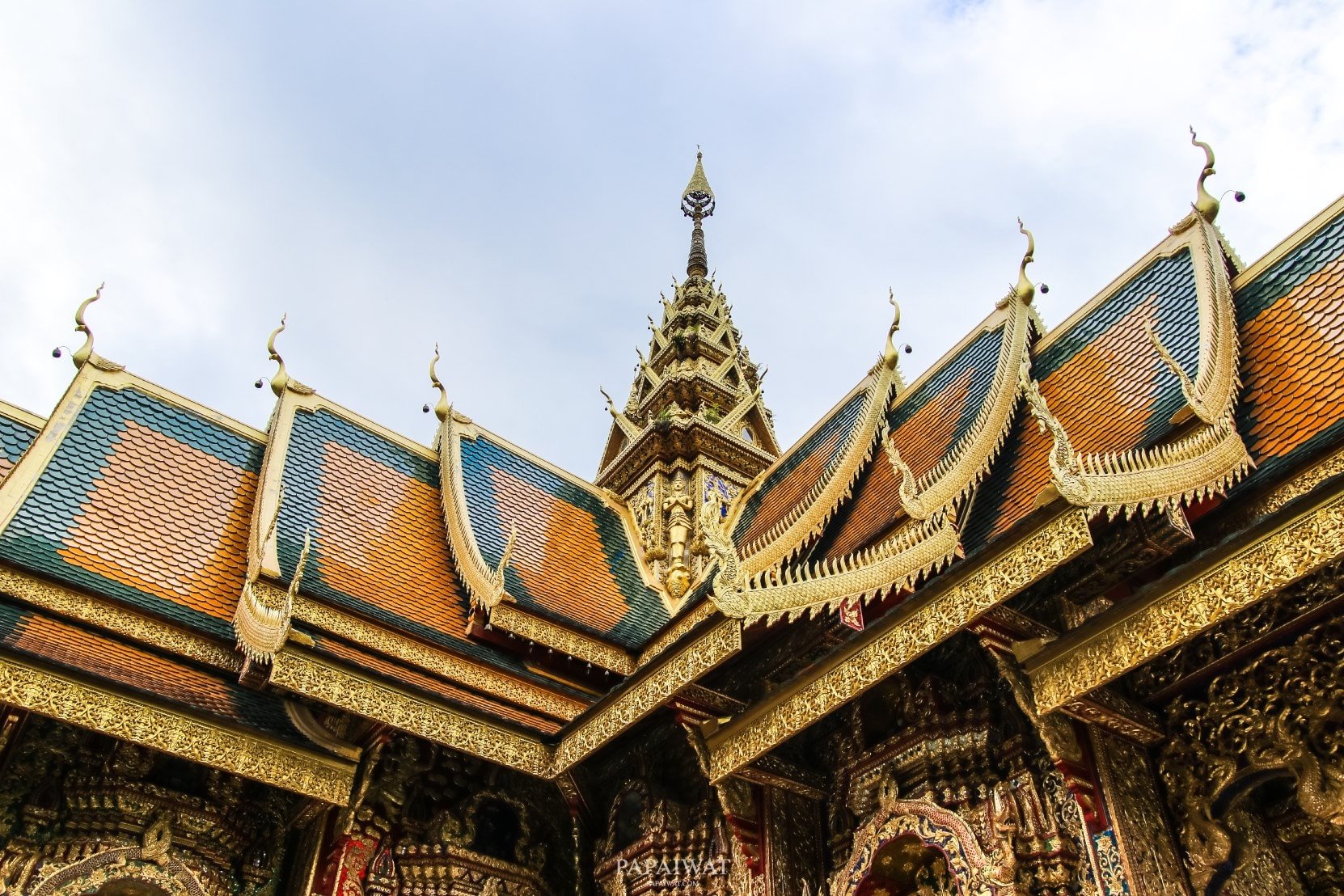
อุโบสถของวัดพระพุทธบาทสี่รอยนี้ เป็นอุโบสถที่มีพุทธศิลป์งดงามมาก มีลวดลายแบบล้านนาอยู่ทุกๆจุดของโบสถ์ทั้งด้านนอกและด้านใน ภายในอุโบสก็มีภาพจิตรกรรมเป็นรูปพระภิกษุผู้ปฏิบัติดีปฏิบัติชอบ หลายองค์ให้เราชื่นชมและกราบบูชา รอบๆอุโบสถนี้มีลูกนิมิตรให้เราได้ปิดทองด้วย เดินปิดทองไป ชื่นชมบรรยากาศไปสุขใจมากๆครับ
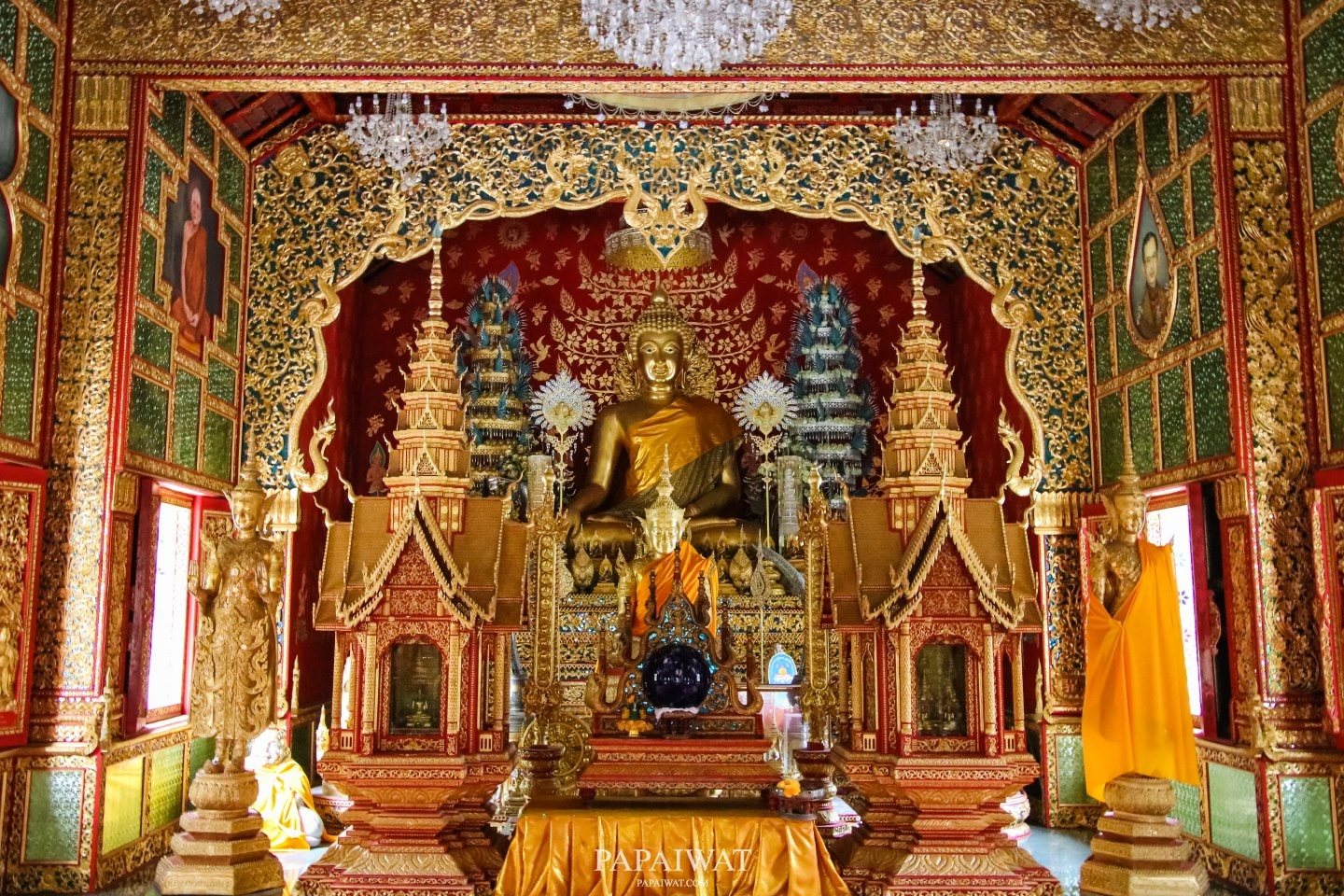
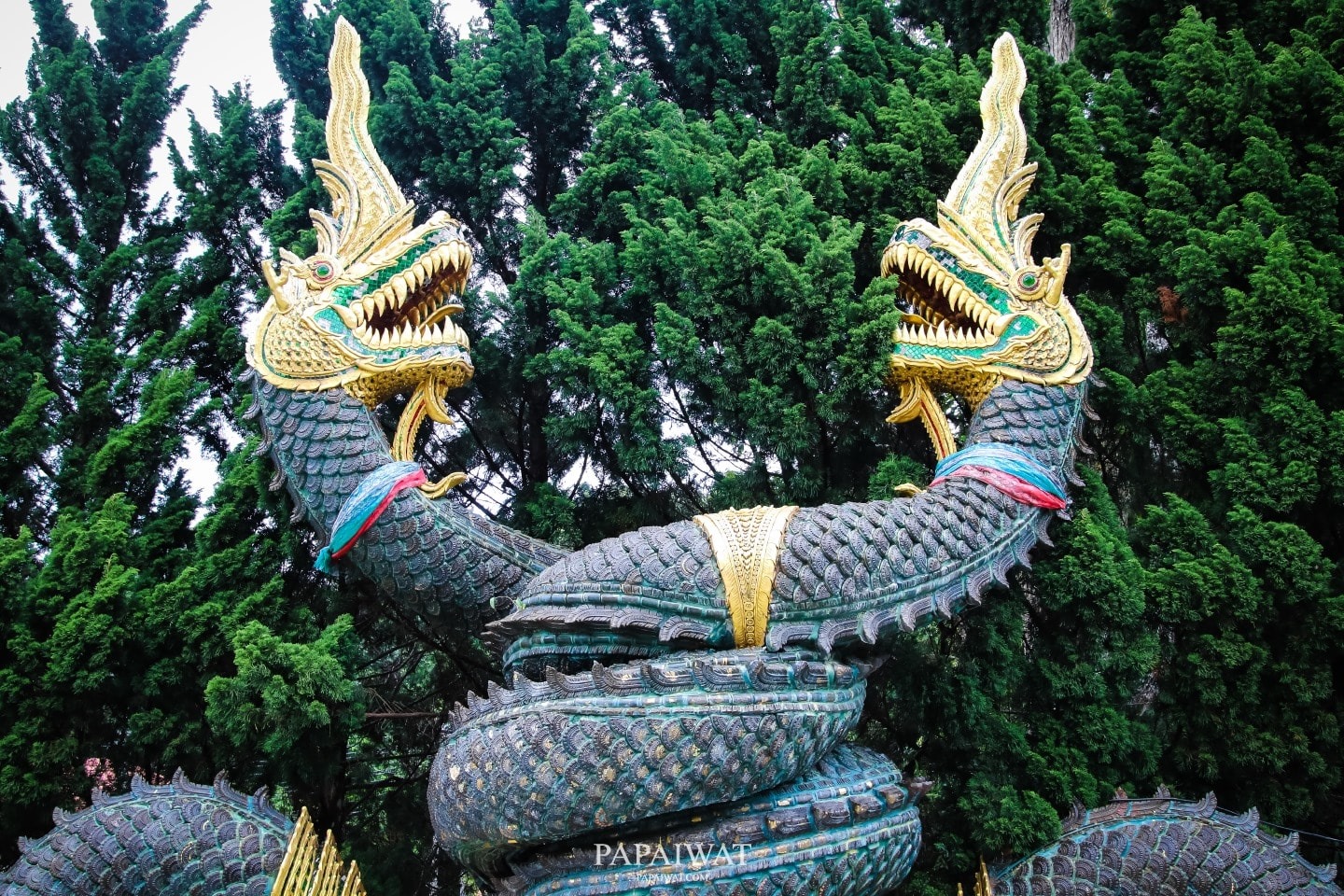
การเดินทางไปวัดพระพุทธบาทสี่รอย
จากเมืองเชียงใหม่มุ่งหน้าไปอำเภอแม่ริมทางหลวง107 ถึงที่ว่าการอำเภอแม่ริม ขับตรงไปเรื่อยๆ ผ่านแยกอีก 2 แยกก็ตรงไป แต่ให้สังเกตซ้ายมือจะมี อบต.ริมเหนือ และจะมีแยกซ้ายไปพระบาทสี่รอย เราเลี้ยวซ้ายขับตามถนนไปเรื่อยๆ ซึ่งจากแยก อบต.ริมเหนือถึงวัดพระพุทธบาทสี่รอยเป็นระยะทาง 34 กิโลเมตร ตลอดทางมีป้ายบอกชื่อวัดทั้งเส้นทาง แต่เน้นนะครับห้ามขับเร็ว และระมัดระวังตอนขึ้นเขาด้วยครับ
ติดตามพาไปวัดได้ที่ :
Facebook : https://www.facebook.com/papaiwatofficial
Instragram : https://www.instagram.com/papaiwatofficial
Twitter : https://twitter.com/papaiwatthai
English Version :
Located in Chiang Mai Province, Wat Phra Phutthabat Si Roi stands as a distinguished yet lesser-known sanctuary of profound beauty and spiritual significance. This revered temple is adorned with an extraordinary feature: the Fourfold Buddha’s Footprints, solemnly enshrined upon a stone platform situated within the verdant expanse of forested highlands atop an elevated mountain. Its serene and sacred ambiance renders it an essential destination for visitors to Mae Rim District, Chiang Mai Province.
Formally known as Wat Phra Phutthabat Si Roi, or the Temple of the Fourfold Buddha’s Footprints, it exemplifies a remarkable testament to Buddhist heritage and devotion.
Nestled within the hallowed precincts of Wat Phra Phutthabat Si Roi, a sacred marvel unfolds—the Fourfold Buddha’s Footprints, where the divine imprints of the four enlightened Buddhas of this Bhadrakalpa rest in harmonious unity, each layered upon the other in a timeless testament to spiritual legacy:
At Wat Phra Phutthabat Si Roi, the revered Fourfold Buddha’s Footprints unite the sacred imprints of the four Buddhas of this Bhadrakalpa, etched upon a single stone:
The first, the majestic footprint of Kakusandha Buddha, reigns as the grandest, stretching an awe-inspiring 12 cubits in length, its vast expanse a symbol of boundless wisdom.
The second, the noble footprint of Konagamana Buddha, graces the stone with a dignified span of 9 cubits, radiating serene enlightenment.
The third, the venerable footprint of Kassapa Buddha, extends 7 cubits, its measured grace a beacon of eternal truth.
The fourth, the sacred footprint of Gotama Buddha, the Enlightened One of our present era, delicately measures 4 cubits, the smallest yet profound in its gentle imprint, embodying compassion and awakening.
Together, these interwoven traces upon the ancient rock weave a tapestry of divine reverence, inviting hearts to pause and venerate the eternal path of the Buddhas.
The History of Phra Phutthabat Si Roi
In the era of the historical Buddha, the Supreme Enlightened One of the present dispensation journeyed to disseminate the Dhamma and guide sentient beings toward liberation in the frontier regions, now known as Thailand. Accompanied by an assembly of 500 disciples, the Buddha arrived at a northern mountain range, where he paused to partake of alms on the summit known as Vepulla Parvata. Upon concluding his meal, while residing at this sacred site, the Buddha, through his omniscient wisdom, discerned that this mountain bore the sacred footprints of previous Buddhas who had attained enlightenment within the Bhadrakalpa, imprinted upon a substantial rock formation.
The Buddha then contemplated the footprints of three preceding Buddhas—Kakusandha Buddha, Konagamana Buddha, and Kassapa Buddha—located at this hallowed ground. Observing this, the disciples, led by the Venerable Sariputta, respectfully inquired, “Venerable Lord, for what reason do you gaze upon this site?” The Buddha responded, “Monks, this location has been sanctified by the footprints of the three Buddhas who preceded me in ages past, each having left their mark here. Furthermore, the future Buddha, Sri Ariya Metteyya, shall also grace this place with his footprint, uniting these four impressions into a singular emblem of enlightenment.” Having thus addressed his disciples, the Buddha proceeded to imprint his own footprint atop those of the three prior Buddhas, thereby establishing the revered Fourfold Buddha’s Footprints.
The Buddha solemnly resolved: “Upon my entry into Parinibbana, celestial beings shall enshrine my sacred relics at these footprints. Two millennia following my Parinibbana, these Fourfold Footprints shall become manifest to humankind and divinities, who shall come to offer veneration and homage.”
Having pronounced this aspiration, the Buddha returned to Jetavana Monastery in the city of Savatthi. Following his Parinibbana, celestial beings fulfilled his resolve by enshrining the Buddha’s sacred relics within the Fourfold Footprints.
Approximately 2,000 years after the Buddha’s Parinibbana, divine beings, following his sacred vow, sought to reveal the Fourfold Footprints to humanity. To this end, they assumed the form of a majestic hawk or eagle, descending from Vepulla Parvata—where the footprints reside to this day—and seized a chick belonging to forest villagers dwelling at the mountain’s base. The bird then ascended back to the summit. Enraged, the villagers pursued it with intent to slay the creature. Yet, upon their search, they found no trace of the eagle; instead, they discovered the Fourfold Buddha’s Footprints amidst the foliage and vines. The villager who beheld this marvel offered reverence and, upon returning to the village, shared the discovery with others. The tidings spread widely, drawing numerous devotees to venerate the site, which came to be known as Phra Bat Rang Rueang (Rainbow Footprint) or Phra Phutthabat Rang Hiaw (Hawk’s Footprint).
During this period, King Mangrai, sovereign of Chiang Mai, learned of the sacred site and, moved by profound devotion, journeyed to pay homage to the Fourfold Footprints, accompanied by his queen, ministers, and retinue. Having completed his veneration, King Mangrai returned to Chiang Mai, where he ruled until the end of his days. His royal successors upheld this tradition, with each monarch rendering homage to the Fourfold Footprints. Subsequently, the designation Phra Bat Rang Rueang or Phra Bat Rang Hiaw was superseded by Phra Phutthabat Si Roi (Fourfold Buddha’s Footprints), signifying the superimposed impressions of the four Buddhas of this Bhadrakalpa.
In the reign of King Thammachangphueak, ruler of Chiang Mai, a pilgrimage was undertaken to venerate the Fourfold Footprints, accompanied by a retinue of 500 attendants. The king commissioned the construction of a vihara to enshrine the footprints upon the prominent rock. Previously, access to the site required arduous climbing or the use of ladders. To facilitate reverence, King Thammachangphueak ordered the erection of a scaffold-like platform encircling the rock, enabling women to view the sacred footprints as well.
When Princess Dararatsami undertook a pilgrimage to venerate the Fourfold Footprints, her deep faith inspired her to construct a modest vihara in their honor. This structure has since been meticulously restored, retaining only its original walls, floor, and altar.
In the year 1929 CE, Kruba Sriwichai, the revered saint of Lanna, visited to pay homage to the Fourfold Footprints. He dismantled the temporary vihara erected by King Thammachangphueak and commissioned a new vihara to enshrine the sacred site. To ensure their preservation, he encased the original footprints in plaster, safeguarding the Fourfold Buddha’s Footprints—regarded as the most ancient in Thailand—so that they might endure as a cornerstone of Buddhist heritage for eternity.
Journey to Wat Phra Phutthabat Si Roi :
Embark on a scenic pilgrimage from Chiang Mai city toward Mae Rim District via Highway 107. Upon reaching the Mae Rim District Office, continue straight ahead, passing two more intersections. Keep an eye on your left for the Rim Nuea Subdistrict Administrative Organization, where a left turn awaits, guiding you toward Wat Phra Phutthabat Si Roi. From this junction, the temple lies 34 kilometers ahead, with clear signposts marking the way throughout. The winding road invites a leisurely pace—drive cautiously, especially as you ascend the mountain, to fully embrace the serenity of this sacred path.



